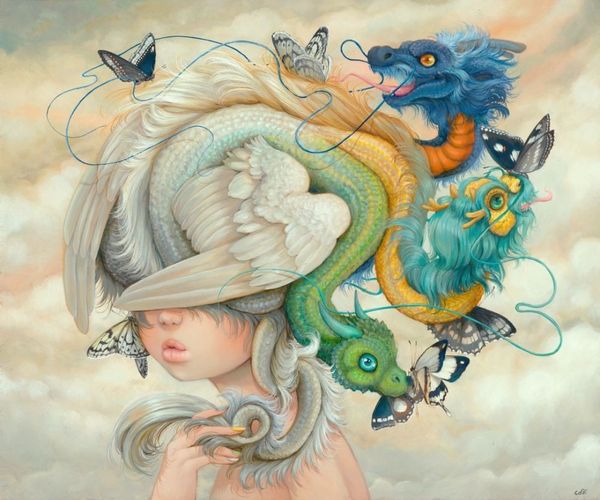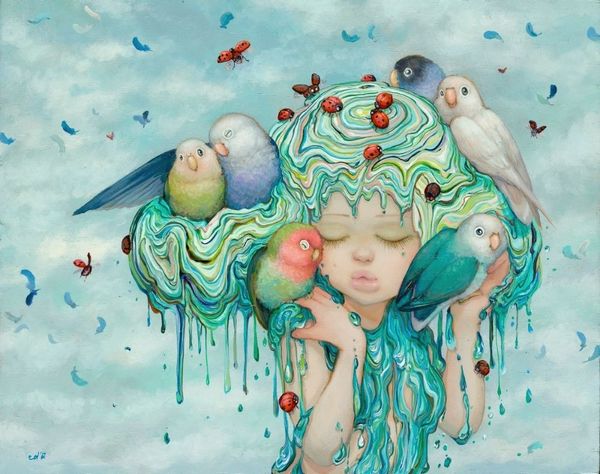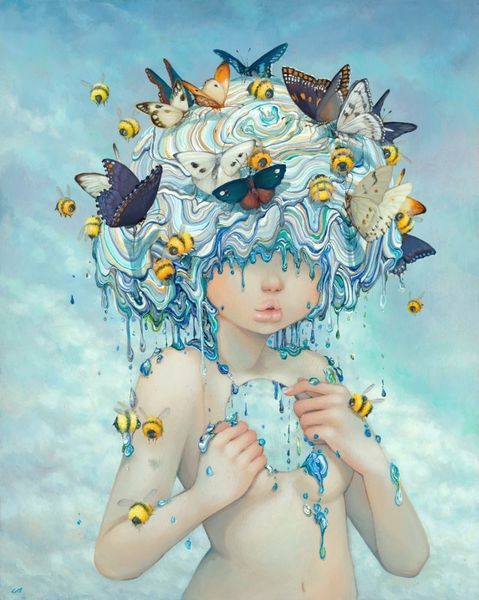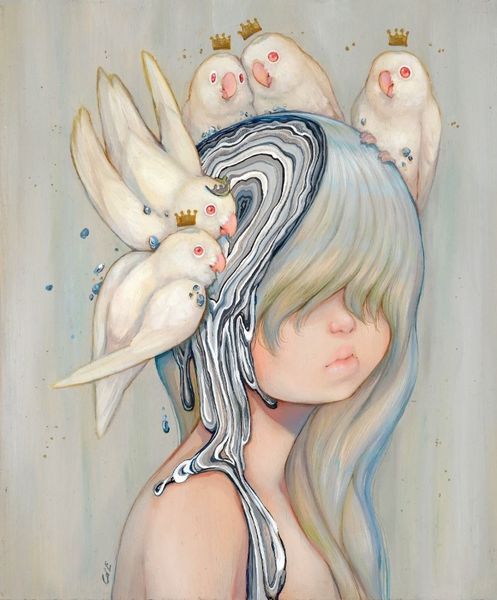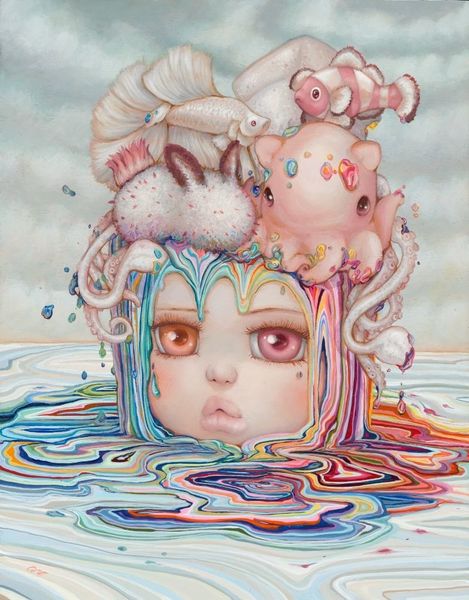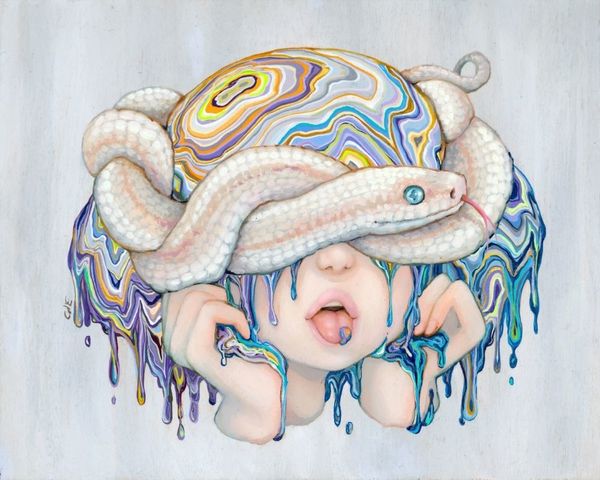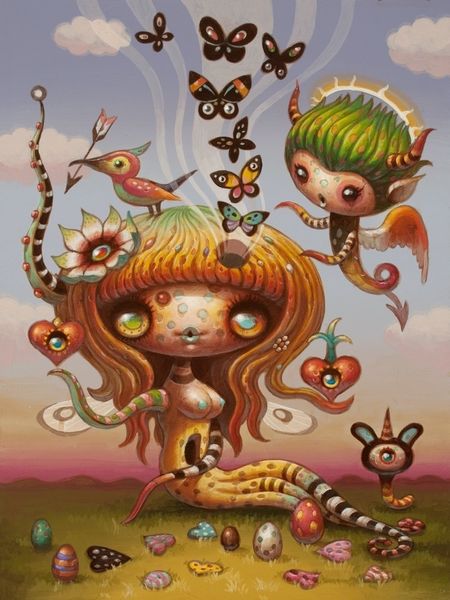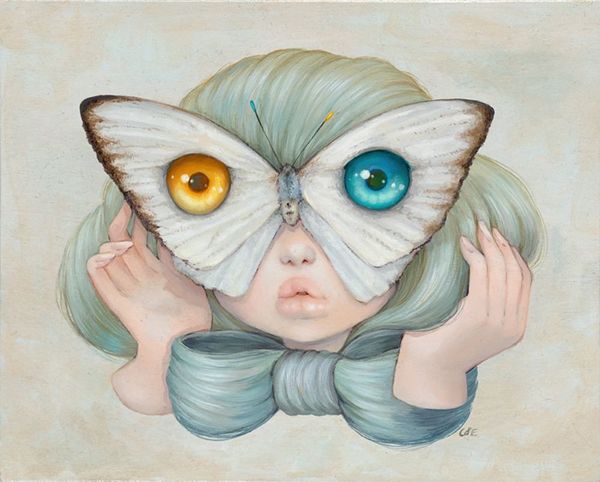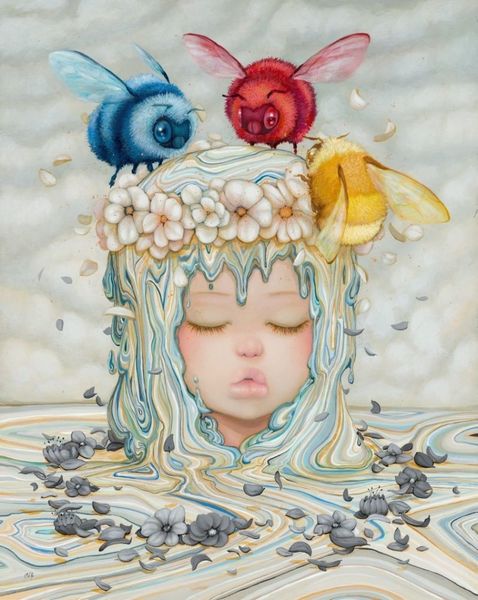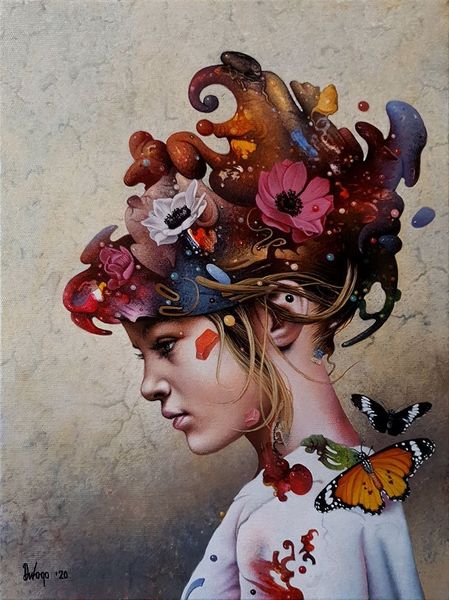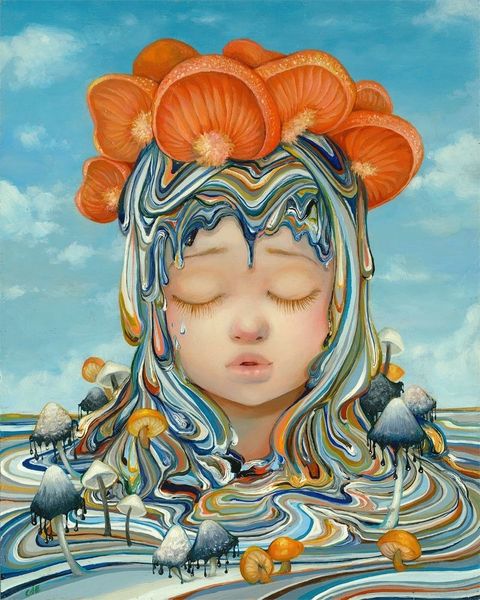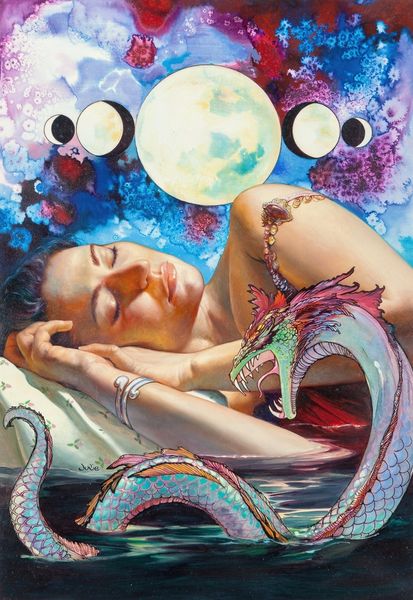
oil-paint
#
portrait
#
pop-surrealism
#
oil-paint
#
figuration
#
oil painting
#
surrealism
#
watercolor
#
realism
Copyright: Modern Artists: Artvee
Curator: I see innocence shadowed by myth. There's a quiet horror that almost tickles, don't you think? Editor: Yes, absolutely. Let's take a look at "Reflection of the Fates," an oil painting created by Camilla d'Errico in 2021. D'Errico's art blends elements of Pop Surrealism with classical portraiture, challenging our notions of art as commodity. Curator: Commodity… exactly! This feels almost mass-produced in its precision, like a high-end doll. But those snakes…each one has a slightly different expression, a little glimmer in its gem-like eyes. How does that tension play into the broader social commentary of her work? Editor: Well, the process behind its production speaks volumes. Oil paint is a traditional medium, connected to a long lineage of artists and craftspeople. This elevates, while the subject itself embraces contemporary themes like self-perception and transformation within the art market. The labor required to achieve that glossy, hyper-real finish emphasizes production and craft. Curator: The surface is key here, almost unsettling in its perfection. And it clashes so beautifully with those drips of rainbow paint running down her skin! It’s like beauty malfunctioning or identity dissolving into pure spectacle. Editor: Precisely! And consider the implications of the snakes themselves. Medusa is reimagined not as a monster, but as a figure caught between her own mythology and today’s relentless cycles of consumption and image making. D'Errico isn’t just giving us a portrait; she's presenting a mirror. Curator: I see what you mean. Looking closer I noticed she has these marks next to her eyes. And those drips don't seem chaotic they're perfectly ordered almost. There's a haunting beauty here, and it feels less like a simple retelling of a myth and more like some kind of statement of our own mediated experiences, like we're the viewers reflected in that polished surface. Editor: In essence, D'Errico uses material and medium to investigate contemporary culture, while simultaneously paying homage to art's rich traditions, forcing a critical consideration about how artworks acquire value in an increasingly commodified world. Curator: Thinking about it now, this wasn’t what I initially thought it was. Editor: Me neither, I really got lost in that conversation.
Comments
No comments
Be the first to comment and join the conversation on the ultimate creative platform.
